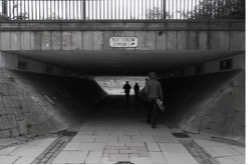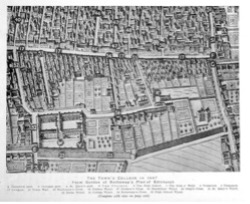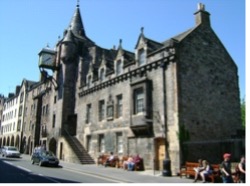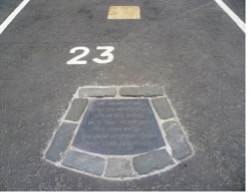19-20 Shrubhill Walk, Edinburgh EH7 4FH
One of Edinburgh’s execution sites, known as the Gallowlee, was on the road between Edinburgh and Leith, which in the seventeenth century were separate towns. Its in-between location was typical for execution sites, which were often on borders or boundaries. It was on a small hill, Shrubhill. The T-shaped gallows is visible on this map from 1682. Witches who were convicted in Edinburgh were sometimes executed at the Gallowlee. Witches were burned on a pyre rather than being hanged on the gallows itself.
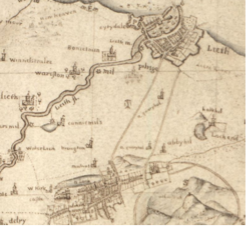
©National Library of Scotland,
Wikimedia Commons
This order by the Edinburgh court of justiciary, 13 September 1678, specifies the Gallowlee as the place of execution for five convicted witches: ‘The Lords Commissioners of justiciary by the mouth of Adam Auld dempster of court decerned and adjudged Margaret Lowes, Isobel Shanks, Margaret Douglas, Helen Forrester and Margaret Smaill to be taken to the Gallowlee of Edinburgh upon Wednesday the eighteenth day of September instant betwixt two and four o’clock in the afternoon and there to be strangled at a stake till they be dead and thereafter to have their bodies burnt to ashes.’ A similar sentence was then passed, 6 November 1678, on Bessie Gourlay, Agnes Somerville and Margaret Souness.
Sources:
- Survey of Scottish Witchcraft, Julian Goodare, Lauren Martin, Joyce Miller and Louise Yeoman, January 2003.
- Julian Goodare (eds.), Scottish Witches and Witch-Hunters, Basingstoke: Palgrave Macmillan, 2013.

